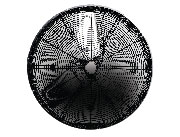So Cool!


Photo: Shutterstock
The Romans had a name for those sultry sweltering days of July and August: the Dog Days of summer. They thought the oppressive heat was caused by the star Sirius also known as the Dog Star which rises and sets with the sun during the summer months.
But the Romans didn’t just talk about the weather. They also gave a lot of thought to finding ways to keep cool as did most ancient peoples who lived in hot climates. Why should we care how people chilled out thousands of years ago? As it turns out many of their solutions are still great ways to beat the summer heat.
Out of Sight Out of Sunlight
If you’ve ever explored a cave you already know the temperature inside is cooler than the air outside. An underground room such as a basement will also usually be cooler than the rooms on upper levels. While our early ancestors instinctively gravitated to these dark and deep places to get away from the blazing sun not everyone liked to live in damp and completely sunless spaces. Some people therefore discovered that using mud to build houses could keep the interiors relatively cool while allowing in some light through either a hole in the roof or small windows.
Mud dwellings built by the Pueblo Indians in the American Southwest are still standing. You can also find mud houses in many parts of Africa. But other early peoples such as a few ancestors of the Pueblo Indians found a loftier way to stay cool: They built homes under the ridge of a cliff to create shade. A remarkable example is the 13th-century Cliff Palace found in Colorado’s Mesa Verde National Park. Dwellings for about 100 people were built into a cliff whose massive upper ridge sheltered many of the buildings from the hot sun for at least part of the day.
TIPS FOR TODAY
If you don’t fancy living in a cave or cellar or under a jutting cliff here are a few “shady” things you can do to lower the heat:
• Keep your blinds and curtains shut during the hottest part of the day to block out the light.
• Add awnings to windows — the shade they provide will cool the air before it drifts inside your home. A covered porch will do the same thing.
• If you don’t want to build an entire porch consider adding an overhang to the roof — it will also stop the summer sun from directly hitting your house.
• Planting shade trees is yet another way to protect your home from the blazing sun.
• If you’ll be outside use a parasol to create shade.

Photo: Shutterstock
Water Ways
“Go jump in a lake” might be the most sensible advice on a hot day. We Jews of course had our mikvaos which were pleasantly cool. The Romans were enthusiastic builders of bathhouses that had both heated and cold waters to bathe in. The cold pool was called a frigidarium and the term was also used for separate swimming pools that were built in some cities and palaces. In Eretz Yisrael Herod built elaborate palaces in Masada Jericho and Herodium which included bathhouses and swimming pools and the remains of some of them can still be seen today.
Oops! We could not locate your form.







